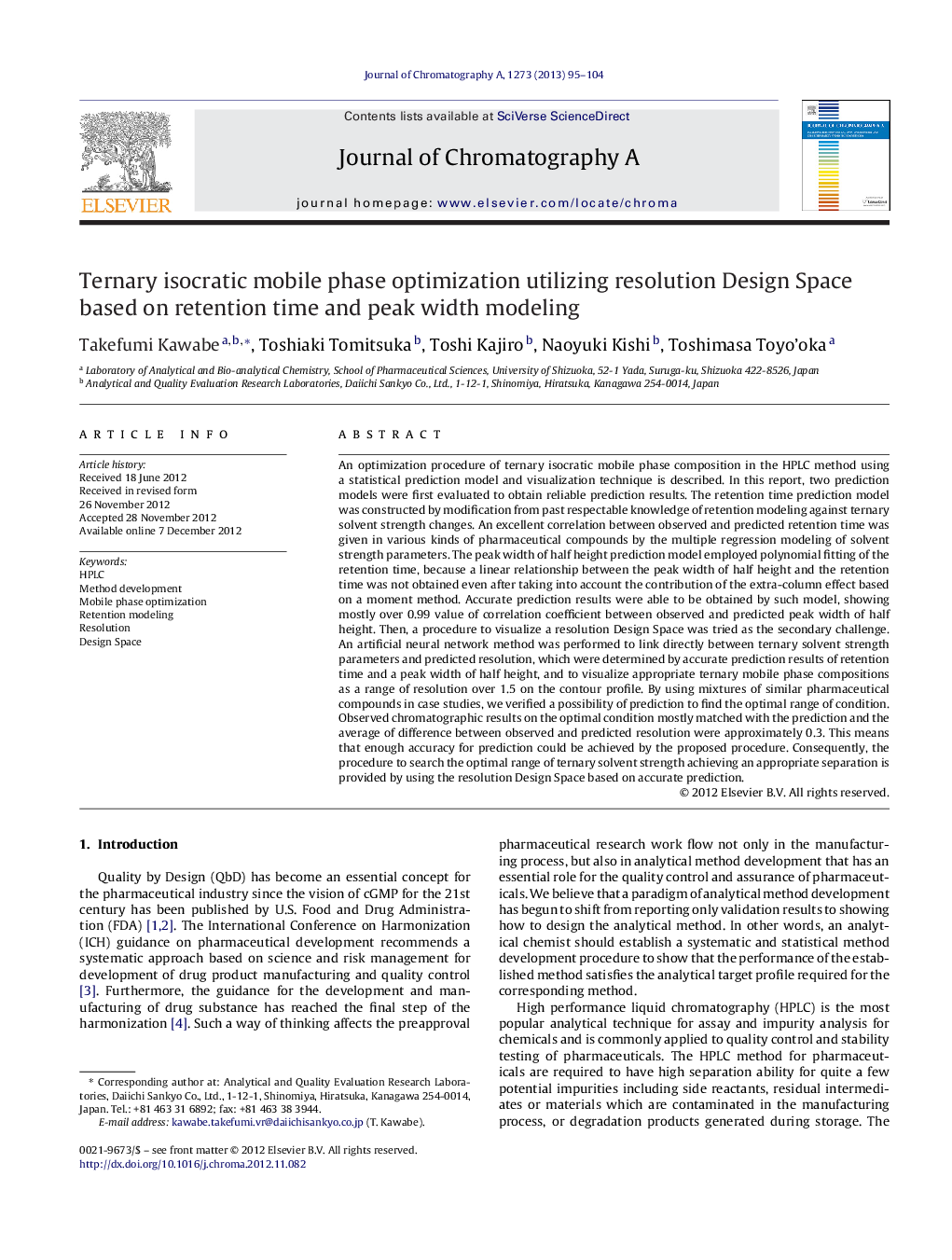| Article ID | Journal | Published Year | Pages | File Type |
|---|---|---|---|---|
| 1205028 | Journal of Chromatography A | 2013 | 10 Pages |
An optimization procedure of ternary isocratic mobile phase composition in the HPLC method using a statistical prediction model and visualization technique is described. In this report, two prediction models were first evaluated to obtain reliable prediction results. The retention time prediction model was constructed by modification from past respectable knowledge of retention modeling against ternary solvent strength changes. An excellent correlation between observed and predicted retention time was given in various kinds of pharmaceutical compounds by the multiple regression modeling of solvent strength parameters. The peak width of half height prediction model employed polynomial fitting of the retention time, because a linear relationship between the peak width of half height and the retention time was not obtained even after taking into account the contribution of the extra-column effect based on a moment method. Accurate prediction results were able to be obtained by such model, showing mostly over 0.99 value of correlation coefficient between observed and predicted peak width of half height. Then, a procedure to visualize a resolution Design Space was tried as the secondary challenge. An artificial neural network method was performed to link directly between ternary solvent strength parameters and predicted resolution, which were determined by accurate prediction results of retention time and a peak width of half height, and to visualize appropriate ternary mobile phase compositions as a range of resolution over 1.5 on the contour profile. By using mixtures of similar pharmaceutical compounds in case studies, we verified a possibility of prediction to find the optimal range of condition. Observed chromatographic results on the optimal condition mostly matched with the prediction and the average of difference between observed and predicted resolution were approximately 0.3. This means that enough accuracy for prediction could be achieved by the proposed procedure. Consequently, the procedure to search the optimal range of ternary solvent strength achieving an appropriate separation is provided by using the resolution Design Space based on accurate prediction.
► The prediction model of retention time against ternary solvent strength parameters was evaluated. ► The relationship between the peak width of half height and retention time was practically verified. ► The resolution against ternary solvent strength was visualized by neural network method. ► A procedure to obtain an accurate resolution Design Space was proposed.
